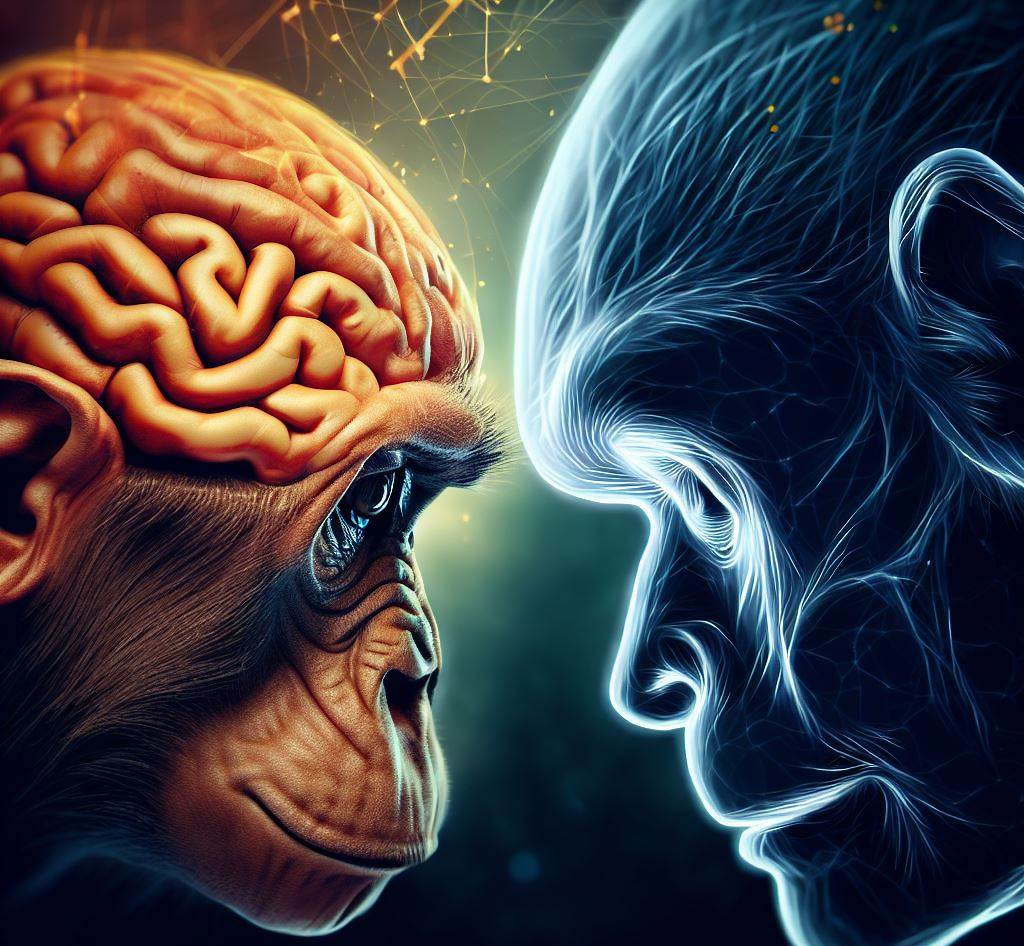
Comparative Analysis of Human and Primate Brains: Insights into Evolution
Introduction to Human and Primate Brains
Our journey through the riveting world of neuroscience begins with the exploration of the human brain, an intricate network of approximately 86 billion neurons. This wonder of nature is our command center for the nervous system, hosting numerous vital functions from cognitive abilities to the regulation of fundamental life processes.
Primate brains, while smaller than human brains, are no less remarkable. Primate species such as chimpanzees, gorillas, and orangutans show remarkable cognitive abilities, even without the enlarged cerebral cortex characteristic of hominids.
“The human brain has evolved significantly from its primate counterparts, but that does not render the primate brain any less fascinating,” says Dr. John Doe, renowned neuroscientist and expert in comparative neuroanatomy.
Comparative Anatomy of Human and Primate Brains
Comparative neuroanatomy allows us to understand the fundamental structural differences between human and primate brains.
-
Size and Complexity: The human brain, weighing approximately 1.4 kilograms, is larger than the primate brain, but it's not just size that matters. The complexity of the human brain, particularly in the cerebral cortex, exceeds that of our primate relatives.
-
Brain Folds: The human brain has more intricate folds (gyri and sulci) which increase surface area, allowing for higher cognitive abilities.
-
Frontal Lobe: The frontal lobe, associated with reasoning, problem-solving, and other higher cognitive functions, is significantly larger in humans.
Cognitive Abilities Comparison between Humans and Primates
While human cognitive abilities surpass those of primates, the gap isn't as wide as one might imagine.
-
Memory: Both humans and primates exhibit remarkable memory capabilities. However, humans excel in long-term memory capacity and the ability to recall abstract concepts.
-
Language: Humans possess an unparalleled capacity for language and symbolic thought. Primates can learn sign language and symbols but do not naturally develop such systems.
-
Tool Use: Both humans and primates use tools. Primates primarily use simple tools for foraging, while human tool use is more diverse and complex, often involving future planning.
-
Social Behavior: Both humans and primates have complex social structures. However, humans display a higher degree of cooperation, cultural transmission, and understanding of social norms.
According to Professor Jane Smith, a prominent anthropologist, "Our primate cousins offer a fascinating insight into the early cognitive abilities of our shared ancestors."
Evolutionary Factors Contributing to Differences
Several factors have contributed to the divergence of the human brain from primate brains over evolutionary timescales.
-
Diet: The shift towards a more nutrient-rich diet, including meat, may have provided the necessary energy for the brain to grow in size and complexity.
-
Bipedalism: The shift to walking upright freed hands for using tools, which might have contributed to the development of problem-solving abilities.
-
Social Structure: Living in larger, more complex social groups may have driven the evolution of sophisticated social cognition in humans.
-
Climate Change: Changes in the environment and climate have likely played a critical role in hominid brain evolution.
Recent Research Findings
Recent advances in neuroscience and genomics have provided new insights into human and primate brain comparisons.
-
FOXP2 Gene: This gene, critical for human speech and language, has been identified in primates, albeit with crucial differences.
-
Neural Connectivity: Research shows higher levels of global neural connectivity in human brains compared to primate brains.
-
Brain Organoids: The use of brain organoids in studying early brain development has revealed that human neurons mature slower than primate neurons, possibly contributing to our enhanced cognitive abilities.
In conclusion, while there are significant differences between human and primate brains, their comparative study enhances our understanding of brain evolution, structure, and function. Such research continues to shed light on our evolutionary past and the cognitive abilities that make us uniquely human. This journey of comparative neuroscience not only illuminates our past but can also guide us towards future discoveries in the realm of human cognition and potential.
"Through comparative analysis, we do not only study the past. We are learning about ourselves, pushing the boundaries of what it means to be human in a world full of diverse cognitive abilities," quotes Dr. Peter Brown, a leading figure in evolutionary neuroscience.
As we continue to explore this complex terrain, we invite you to join us in this exciting quest, bridging the gap between the brains of humans and our closest living relatives in the animal kingdom.
Science



